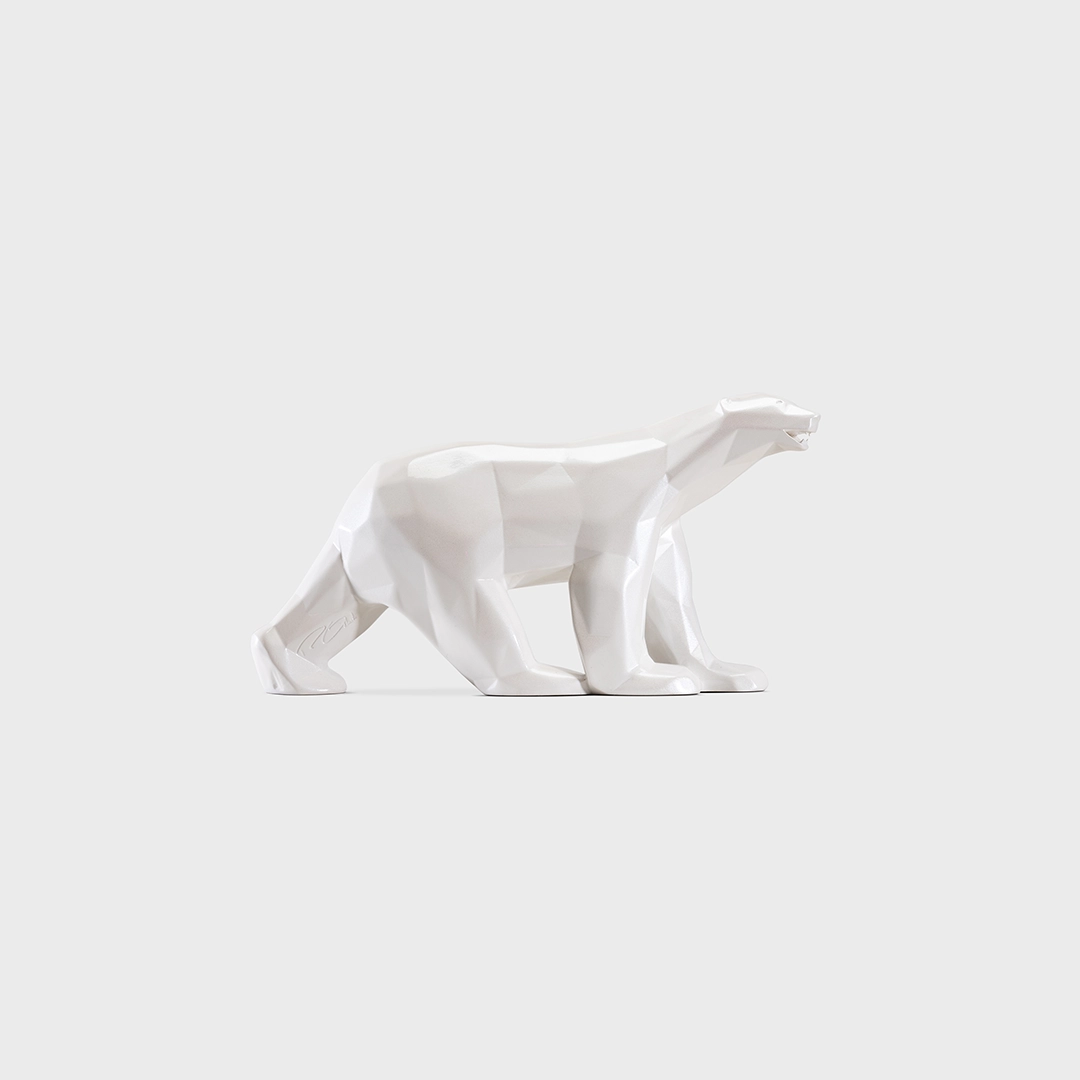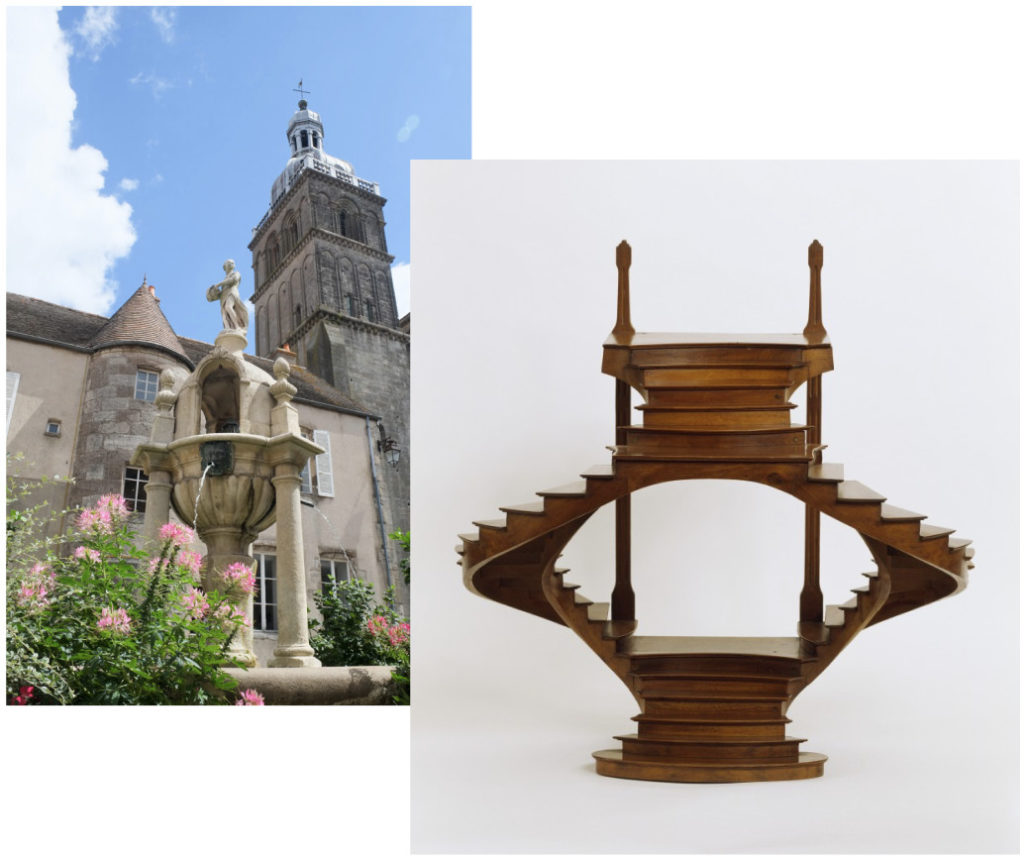
Saulieu village square / model of a wooden staircase made by François Pompon’s father.
1855-1870 A childhood of craftsmanship
François Pompon was born in Saulieu in 1855, in the heart of Burgundy, France, where he grew up admiring the sculptures and bas-reliefs in the Basilica of Saint Andoche and the tombstones in the cemetery.By the age of 14, he was already working in his father’s carpentry workshop. He also tried his hand at stone-cutting with his childhood friend Fourchotte’s parents, who were funeral marble masons.
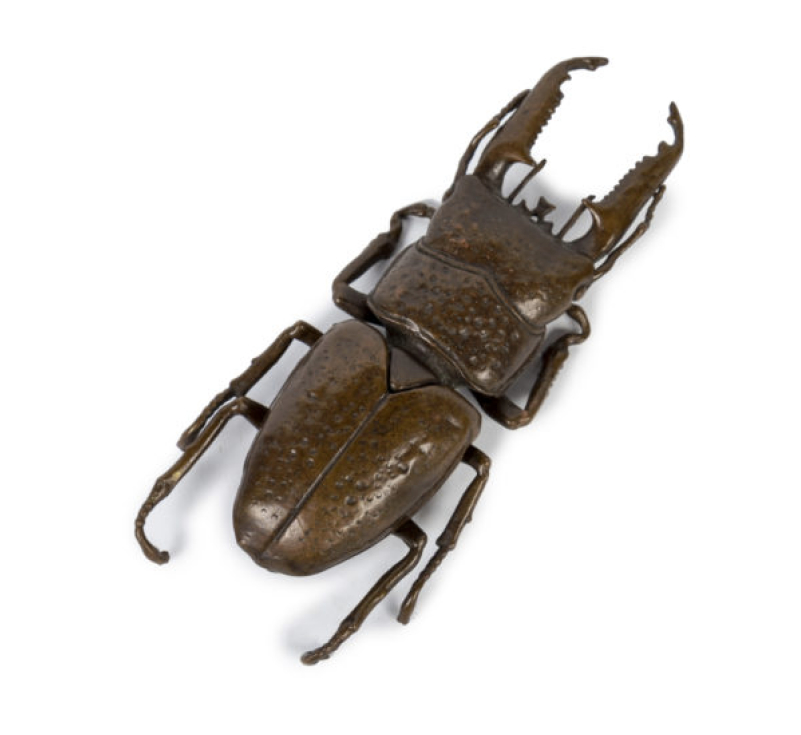
La Lucane, the first work officially presented by François Pompon in 1874.
1870-1875 The Dijon years of François Pompon
On his 15th birthday, he received a 50-franc grant from the parish priest of Saulieu, which he used to set up in Dijon as an apprentice stonemason with a marble mason.
At the same time, he attended evening classes at the Dijon School of Fine Arts, specialising first in architecture, then engraving and finally sculpture.
Encouraged by one of his teachers, Mr Darmon, he took part in a sculpture competition, presenting his first official work and his first animal: a dormouse. He won the competition.
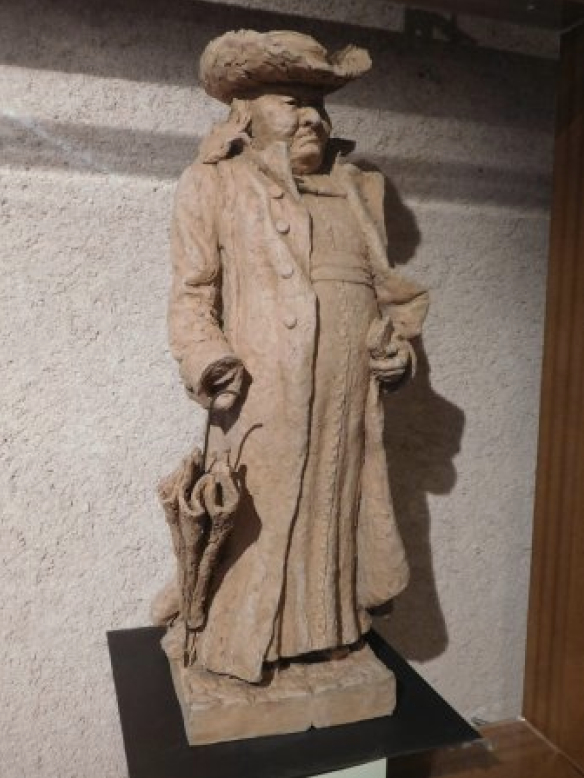
The parish priest of Saulieu – François Pompon 1875.

Saint Catherine – François Pompon 1888.
1875-1883 François Pompon’s debut in Paris and his sculpture studio in rue Campagne-Première
In 1875, François Pompon arrived in Paris and found work as a funeral marble maker. He discovered the effervescent life of Paris. His lucidity and jovial personality opened the doors of the Petite Ecole for him to continue studying sculpture.
Aimé Millet taught him to observe, copy and train his eye.
In 1878, at the age of 23, he left his job as a marble mason to become a full-time sculptor.
The little money he earned by offering his services as a practitioner during the day was spent on plaster and clay to work on his own sculptures by candlelight in his 20m2 studio flat in the rue Campagne-Première, where he remained until the end of his life.
In 1880 and 1881, at the Salon des Artistes Français, he presented sculptures of the inhabitants of Saulieu, including a bust of his twin brother.
Without success or hope. He was not far from giving up.
He scarcely lived with his wife Berthe, a dressmaker, whom he had met on leaving the reconstruction site of the Town Hall, where François worked as an ornamentalist.
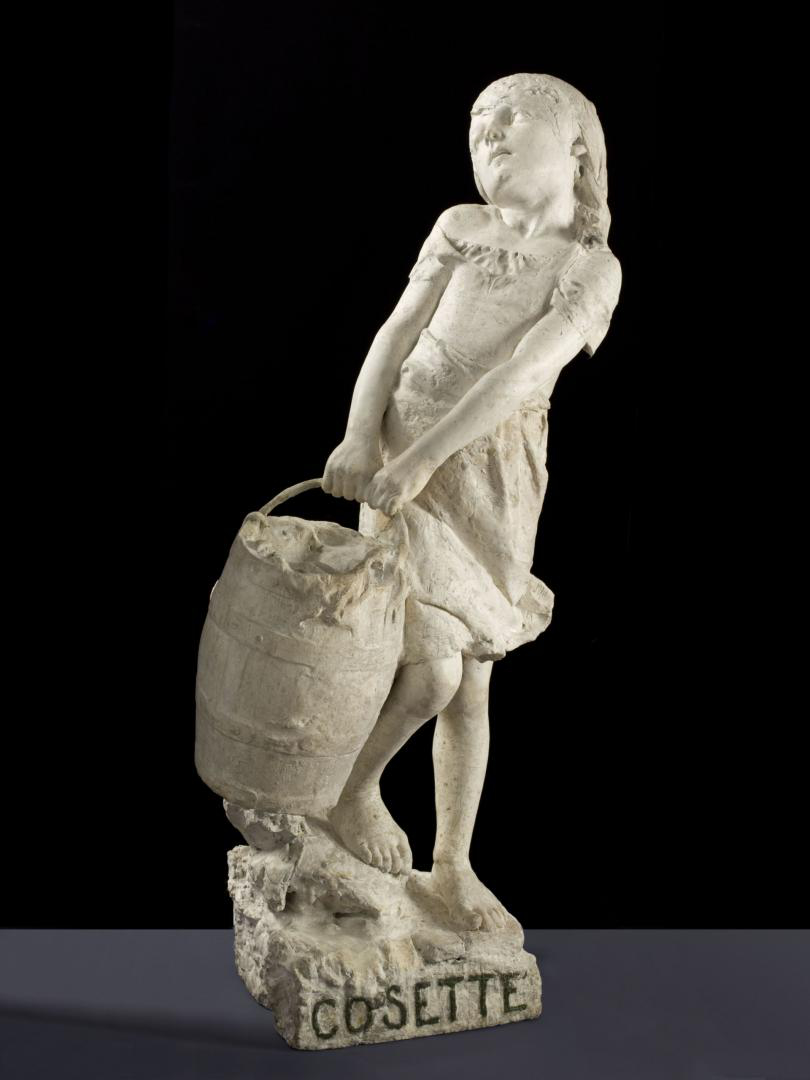
Cosette – François Pompon 1887.
1884-1895 A career as a practitioner, in the shadow of Auguste Rodin
His bust of Saint Catherine, his wife’s encouragement, chance encounters and word of mouth opened the doors to the workshops of the greatest sculptors in Paris, where he worked as a practitioner.
In 1889, he exhibited a portrait of Cosette inspired by Victor Hugo’s Les Miserables. This sculpture, far removed from the fashionable subjects celebrating grandeur and glory, still did not bring him success. Auguste Rodin, then a superstar of French sculpture, spotted this Cosette and offered her a job in his studio.
After a few years, François Pompon became head of Auguste Rodin’s studio. But as his boss was not a very good payer, his financial situation did not necessarily improve.
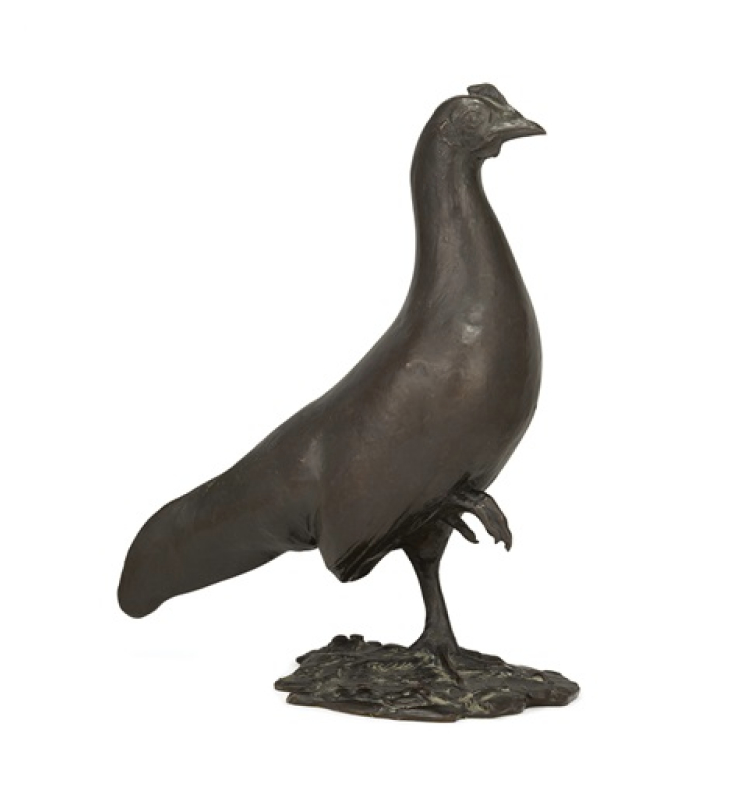
Poule Cayenne – François Pompon 1908.
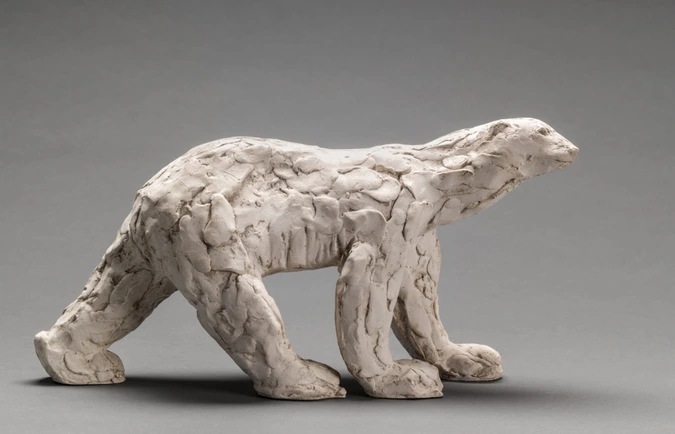
White bear, plaster work – François Pompon 1920.
1895-1914 The return of animals in the work of François Pompon
Despite his veneration for Auguste Rodin, a lack of money forced François Pompon to find a new job. He worked with René de Saint-Marceaux, between Paris and the village of Cuy-Saint-Fiacre in Normandy.
It was a return to his roots for the sculptor, who at last enjoyed a peaceful life with his wife. The countryside, which François had missed so much, inspired him.
In his spare time, he built a portable mini sculpture studio to immortalise moving farm animals in clay.
In 1906, he presented his first animal sculpture since his dormer 30 years earlier: a Cayenne hen. It stood out among the works of other artists.
François had finally found his style: animals in motion, with lines stripped of superfluous detail. But success was still elusive.
The menagerie at the Jardin des Plantes gave him animal models other than farm animals: mole, hyena, coot, vulture, pelican… and his first encounter with the polar bear. His studio became Noah’s Ark.

Ours blanc – François Pompon 1921.
1914-1921 The war
War was declared and art was obviously no longer a concern.
His employer and friend René de Saint-Marceaux died, leaving him without work.
At 65, he was demoralised. He returned to Paris and looked for odd jobs to survive. Berthe suffers from paralysis. He learns of Rodin’s death.
At the end of the war. He returned to sculpture and presented his first 40 cm white bear.
Nobody noticed him. To survive, he was reluctantly forced to sell his works and their moulds.
“It’s movement that determines form.”
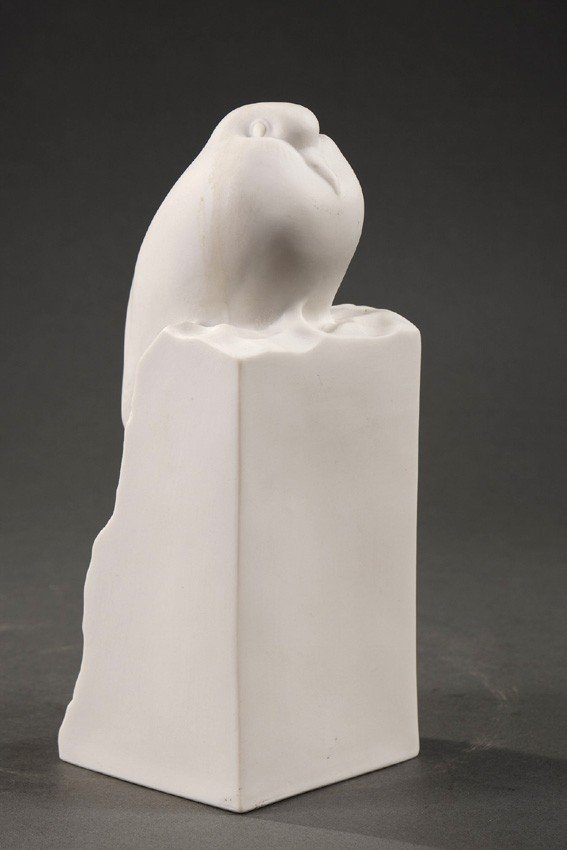
Colombe – François Pompon 1921.
1921 First signs of recognition for sculptor François Pompon
After the war years, the simple beauty and serenity that emanate from François Pompon’s animals is a welcome relief. This was particularly true of former soldiers who were apprentice sculptors and admired the sculptor’s work, taking classes with him in his small studio in the rue Campagne-Première.
In 1921, the “groupe des artistes animaliers”, of which he was a member, encouraged him and gave visibility to his work.
The turtle-dove entered the Musée du Luxembourg.
He was commissioned to produce works such as the monument to the dead at Cuy-Saint-Fiacre.
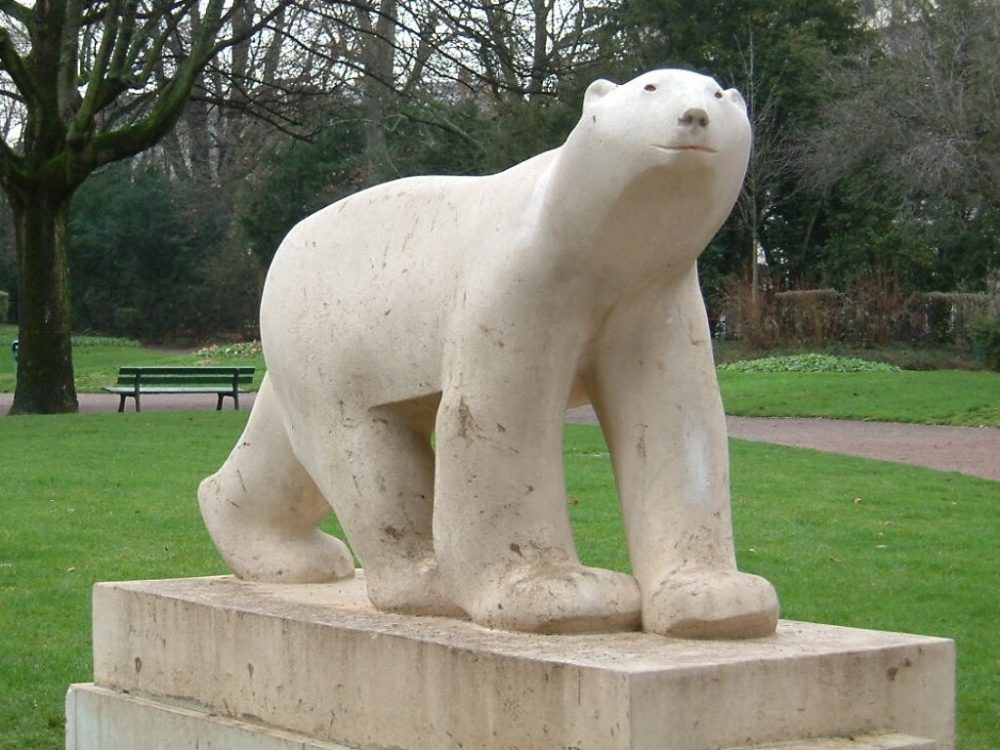
François Pompon’s White Bear in Darcy Square, Dijon, Burgundy, France.
1922 François Pompon’s consecration at last
His friend René Demeurisse persuaded him to make a life-size version of his polar bear. It was a monumental sculpture, 2.45 m long, which had difficulty fitting into his 20m2 studio.
He spent all his savings on this work, which he presented at the Salon d’Automne. His majestic bear with its pure lines was in complete contrast to the aesthetic of the realist sculpture of the time. It was an immediate and unanimous success.
“And then, little by little, I remove things so that I only keep what is essential.

Panther ready to pounce – François Pompon. Posthumous bronze casting by Valsuani.
1924-1933 François Pompon finally makes a living from his work
Pompon’s bestiary travels from Tokyo to New York, via Prague, Stockholm, Amsterdam and Barcelona.
He is a much sought-after artist who is finally making a living from his work.
Commissions poured in and he hired 3 practitioners to make reproductions to which he systematically added the finishing touches.
The Victor Hugo house commissioned him to produce a reproduction of Cosette, which also received the recognition it deserved.
After being repeatedly shunned by his home town, the town of Saulieu decided to create a museum dedicated to François Pompon.
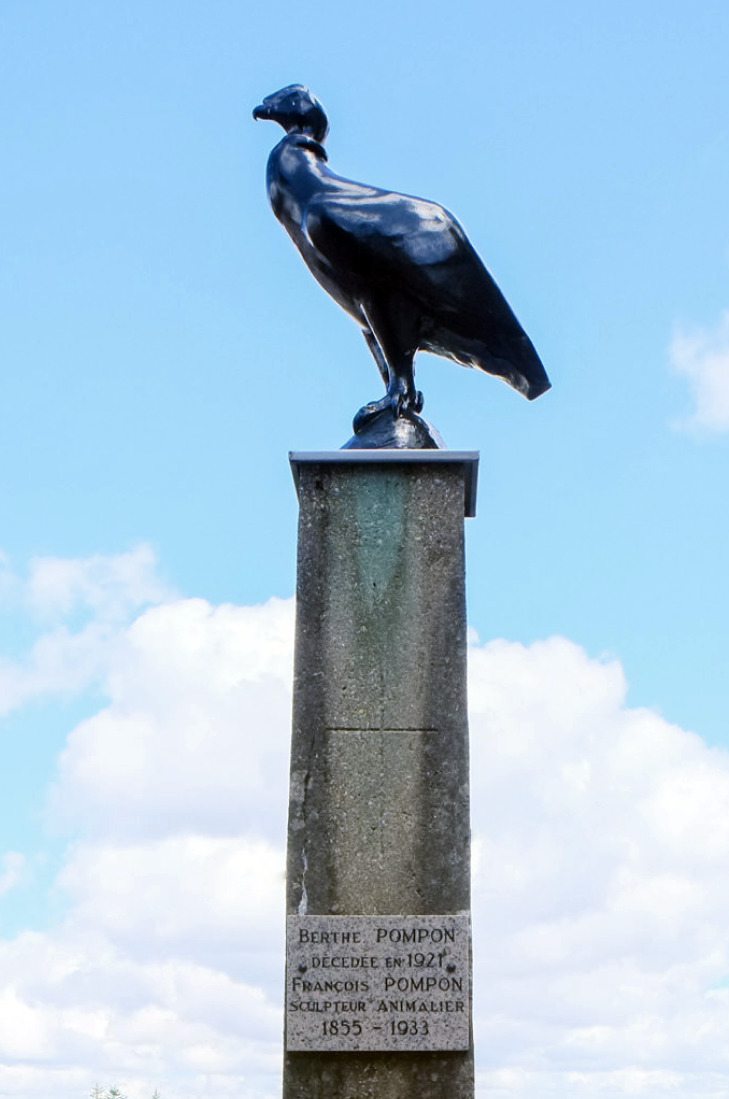
Condor – François Pompon. On the tombstone of Berthe and François Pompon, Saulieu cemetery.
1933 Death of the artist
The father of the polar bear leaves our world at the age of 78, at the pinnacle of his glory.
The Natural History Museum paid tribute to him by dedicating a temporary museum to him.
He is buried in Saulieu with his wife Berthe, under the protection of the great condor that he sculpted to adorn her tombstone.





